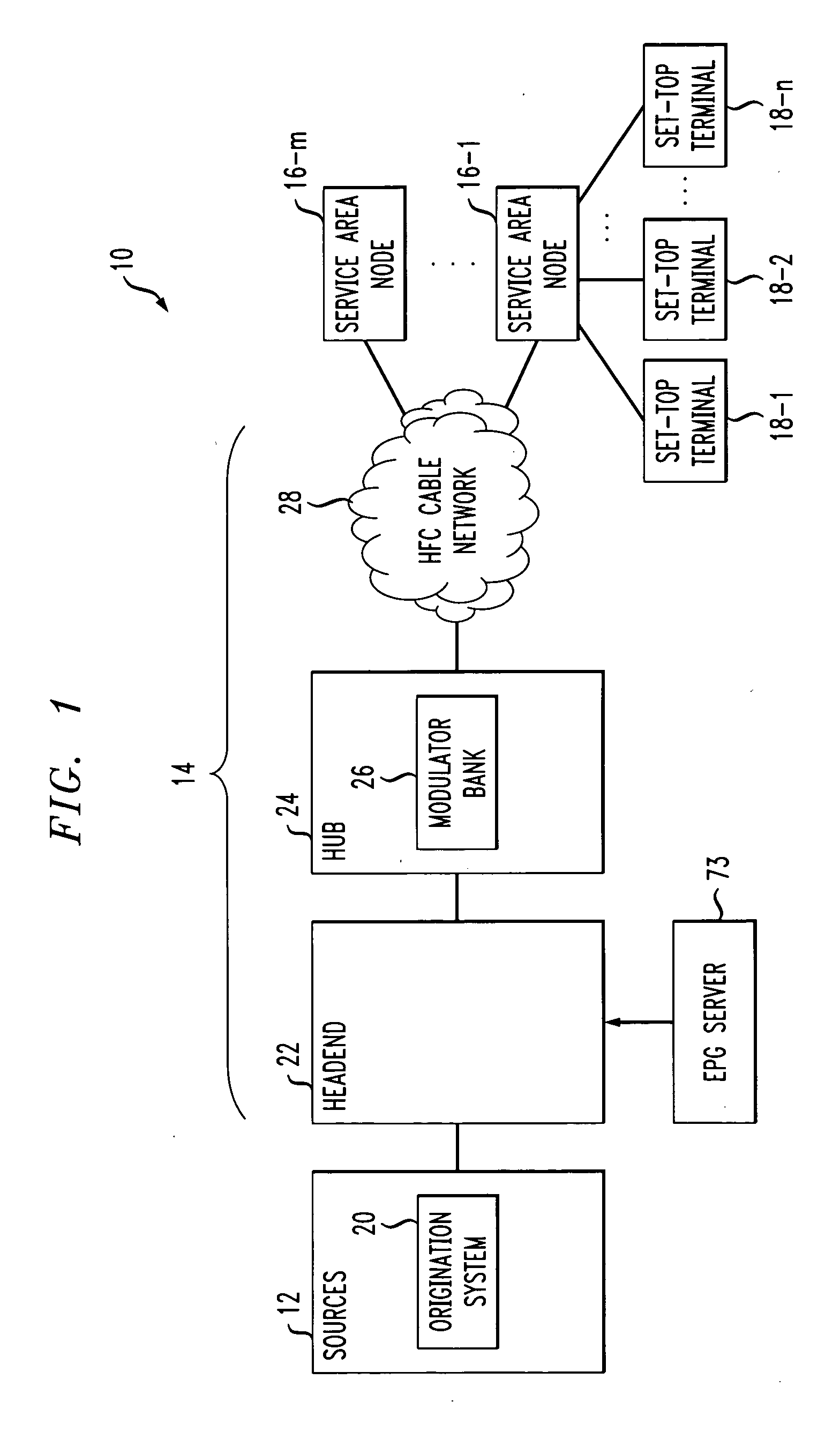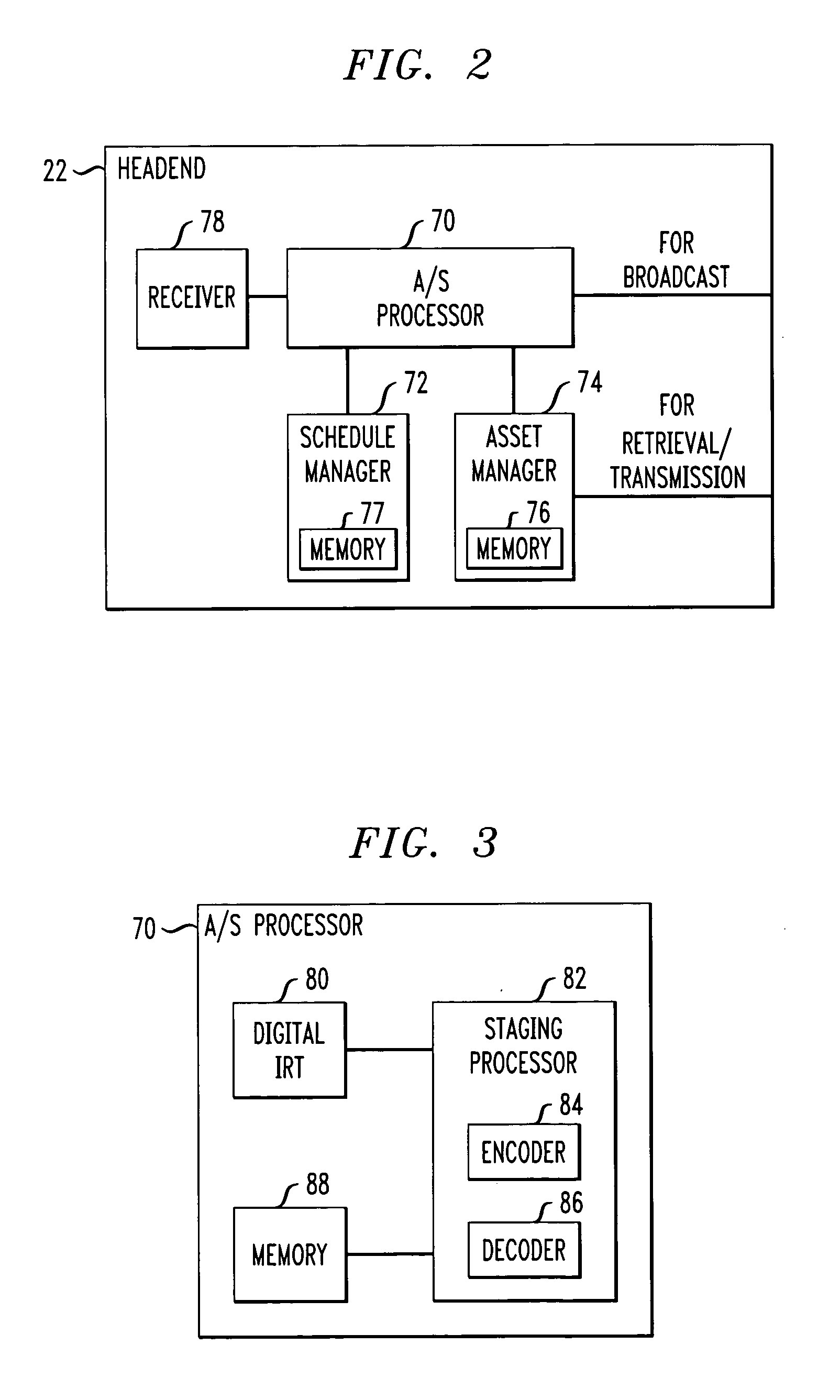Methods and systems for determining audio loudness levels in programming
a technology of audio loudness and programming, applied in the field of communication methods and systems, can solve problems such as unexpected effects on subsequent programs provided by channels, events that go beyond the scheduled end time, and variance in the start and/or end time of programs,
- Summary
- Abstract
- Description
- Claims
- Application Information
AI Technical Summary
Benefits of technology
Problems solved by technology
Method used
Image
Examples
Embodiment Construction
[0047] To correct for improperly encoded audio in stored program assets, which may result in unexpected volume changes as a program switches to a commercial or a subsequent program, the loudness of audio of a stored program asset is determined and the audio of the asset is re-encoded, if necessary. The audio may be determined by identifying audio of intermediate loudnesses, which is considered to be dialog. The loudness of the dialog is determined, preferably by psycho-acoustic criteria, such as Leq (A), and compared to the loudness setting of the encoded audio. If the determined loudness and the loudness setting are different by more than a predetermined amount, the audio of the asset is re-encoded at a loudness setting corresponding to the determined loudness. If the determined loudness and the loudness setting are not different by more than the predetermined amount, the loudness setting is acceptable. The method may be applied to programs as they are received, as well. Sources of...
PUM
 Login to View More
Login to View More Abstract
Description
Claims
Application Information
 Login to View More
Login to View More - R&D
- Intellectual Property
- Life Sciences
- Materials
- Tech Scout
- Unparalleled Data Quality
- Higher Quality Content
- 60% Fewer Hallucinations
Browse by: Latest US Patents, China's latest patents, Technical Efficacy Thesaurus, Application Domain, Technology Topic, Popular Technical Reports.
© 2025 PatSnap. All rights reserved.Legal|Privacy policy|Modern Slavery Act Transparency Statement|Sitemap|About US| Contact US: help@patsnap.com



